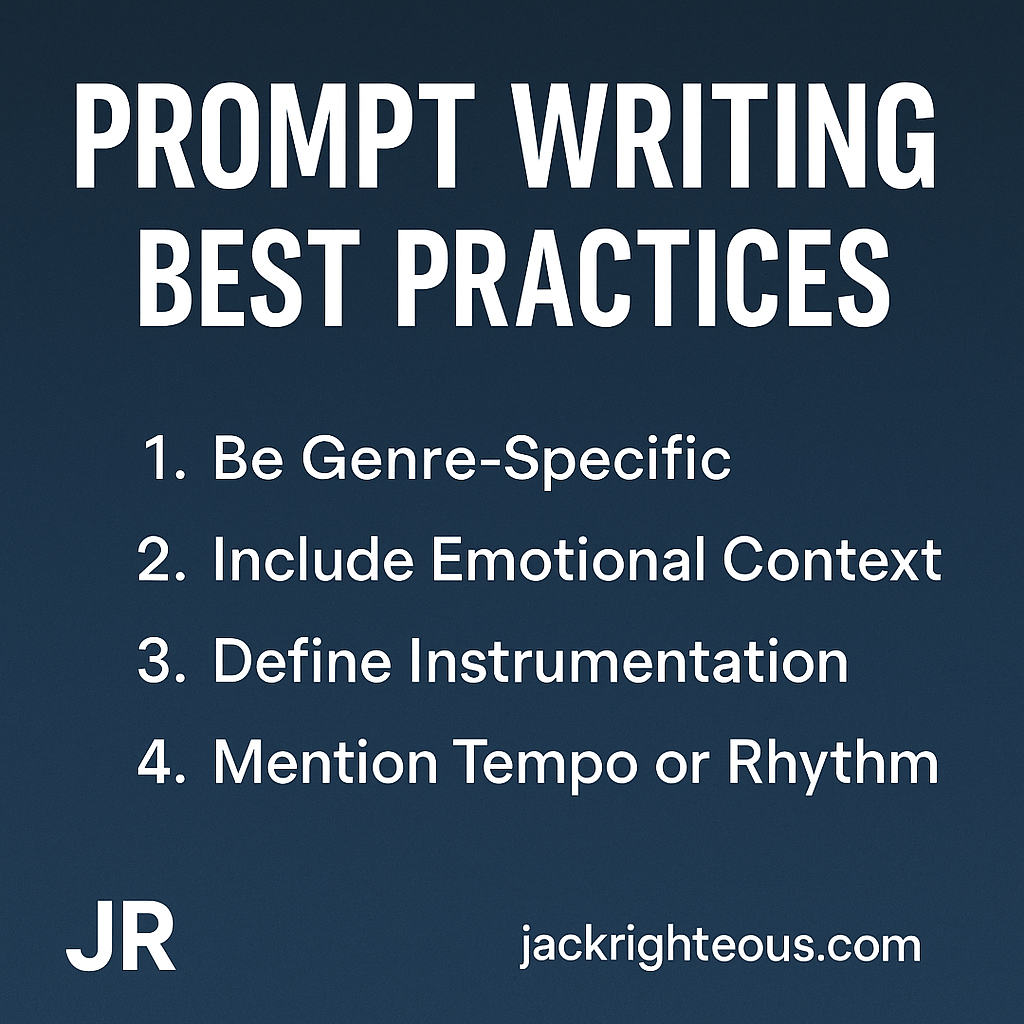
Crafting Effective 120-Character Music Prompts in Suno AI
Gary WhittakerCrafting Effective 120-Character Music Prompts in Suno AI
Updated June 12, 2025 — includes new genre examples and prompt crafting advice for Suno AI V4
Suno AI offers creators a powerful tool to generate music across various genres and styles. But with only 120 characters per prompt, every word matters. This guide dives into best practices for crafting impactful prompts—ensuring your creations match your vision. Real examples from Gospel, Reggae, Lo-fi, and more are included.
Why Precise Prompts Matter
- Ambiguous prompts produce unpredictable results.
- Specific prompts guide genre, tone, and instrumentation.
- The more detailed your language, the more accurate the output.
Anatomy of a Strong Prompt
- Genre: Define the music category (e.g., Gospel, Reggae).
- Mood: Set the emotion (e.g., joyful, melancholic).
- Instrumentation: Guide the sound (e.g., organ, steel drums).
- Tempo: Mention pacing (e.g., slow, upbeat).
Prompt Writing Best Practices
1. Be Genre-Specific
Bad: “Nice music”
Better: “Soulful Gospel with organ and choir harmonies”
2. Include Emotional Context
Bad: “Happy song”
Better: “Joyful Gospel with clapping and energetic tempo”
3. Define Instrumentation
Bad: “Make it funky”
Better: “Funky Hip-Hop with jazz trumpet and deep bass”
4. Mention Tempo or Rhythm
Bad: “Sad Lo-fi”
Better: “Slow Lo-fi with soft piano, vinyl crackle, and ambient drums”
Real Prompt Examples by Genre
Gospel
- Joyful Gospel with choir vocals, clapping, and uplifting organ melody
- Slow worship Gospel with piano and soulful solo vocals
Reggae
- Relaxed Reggae with steel drums, rhythmic guitar, and smooth bassline
- Upbeat Reggae with catchy horns and syncopated rhythms
Cannabis-Influenced Styles
- Chill Lo-fi with smooth beats, mellow synths, and ambient effects
- Funky Hip-Hop with deep bass, jazzy trumpet, and laid-back groove
Experimental
- Ambient soundscape with minimal percussion and ethereal vocals
- Dark cinematic track with haunting strings and deep synths
Common Mistakes to Avoid
1. Being Too Vague
Bad: “Good music for a happy mood”
Fix: “Uplifting Gospel with choir vocals and fast tempo”
2. Overloading the Prompt
Bad: “Track with all instruments in Gospel, Rock, and Reggae styles”
Fix: “Dynamic Gospel with organ and soulful choir harmonies”
3. Ignoring Instrumental or Tempo Tags
Bad: “Instrumental music”
Fix: “Instrumental Reggae with acoustic guitar and light percussion”
My Personal Journey with Prompts
When I first started using Suno, my prompts were vague and generic. The results were flat. Once I added genre, emotion, and key instruments, everything clicked.
Example: “Joyful Gospel with piano and clapping” became a favorite that sparked multiple strong versions and even a Spotify release.
Join the Movement
Practice writing smarter prompts. Start with genre, mood, and instrumentation—and let your music speak for itself.
